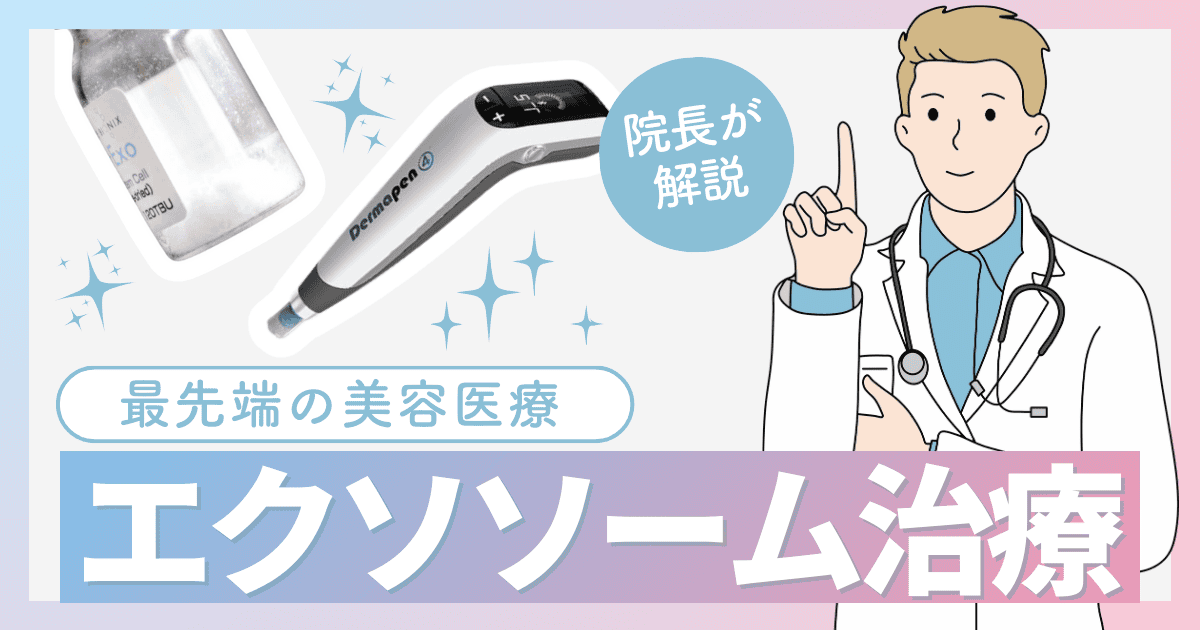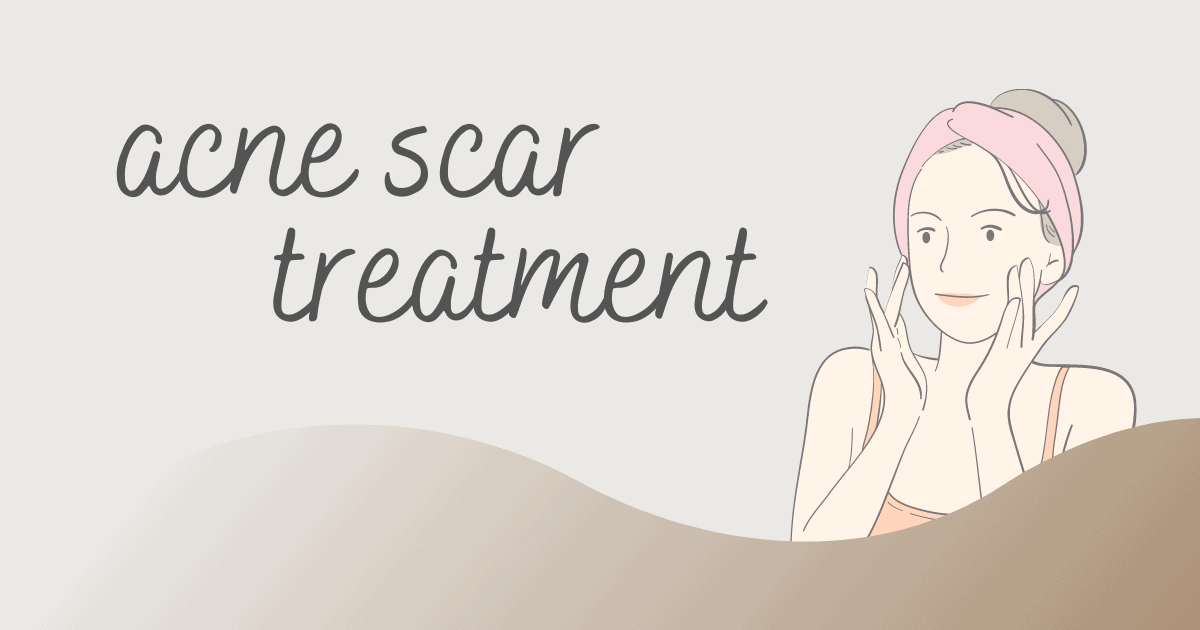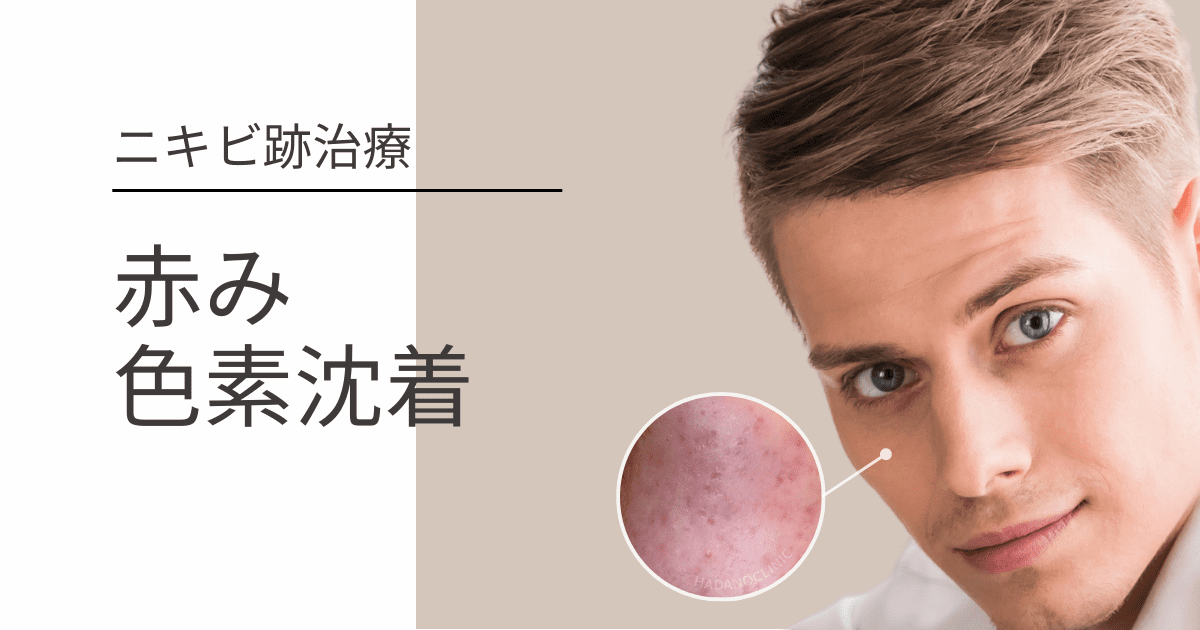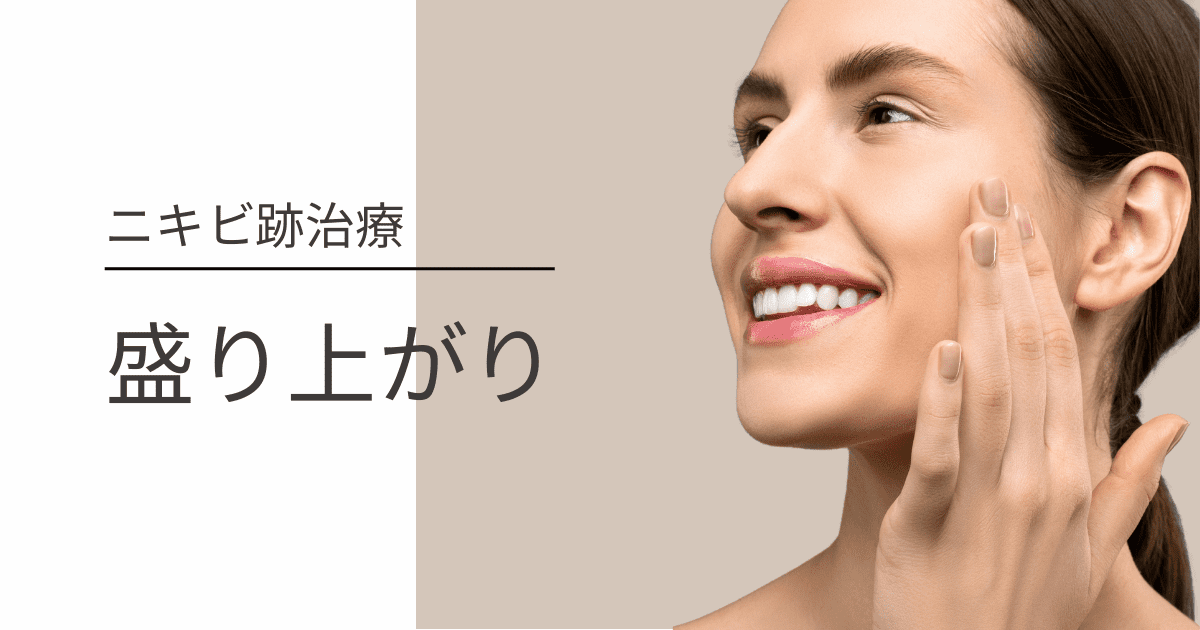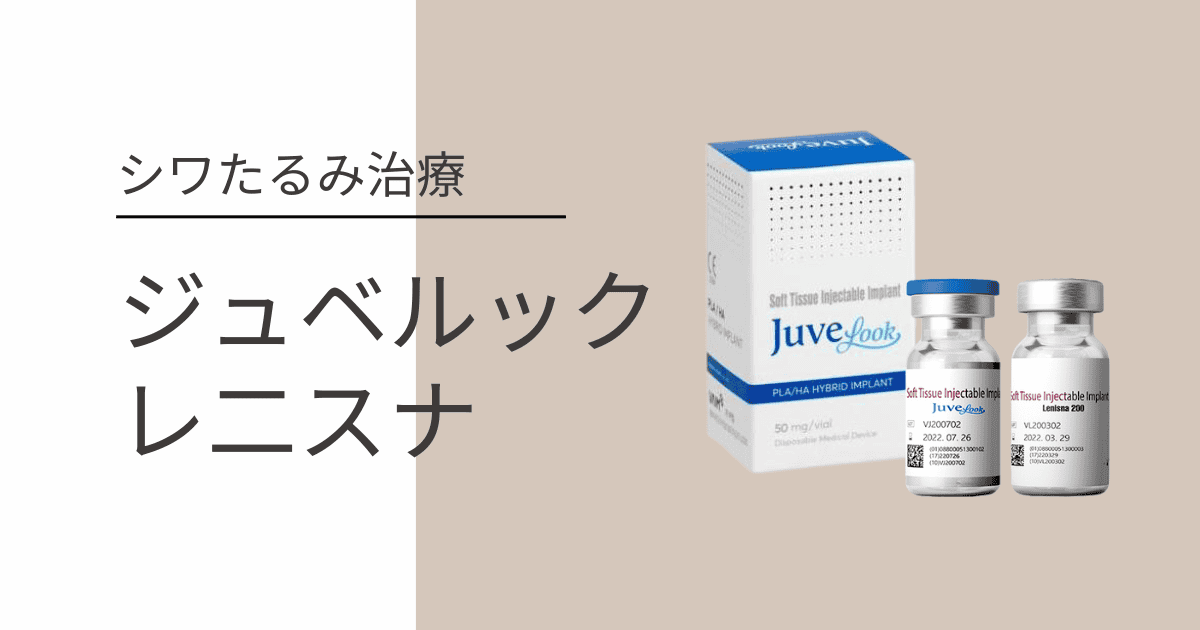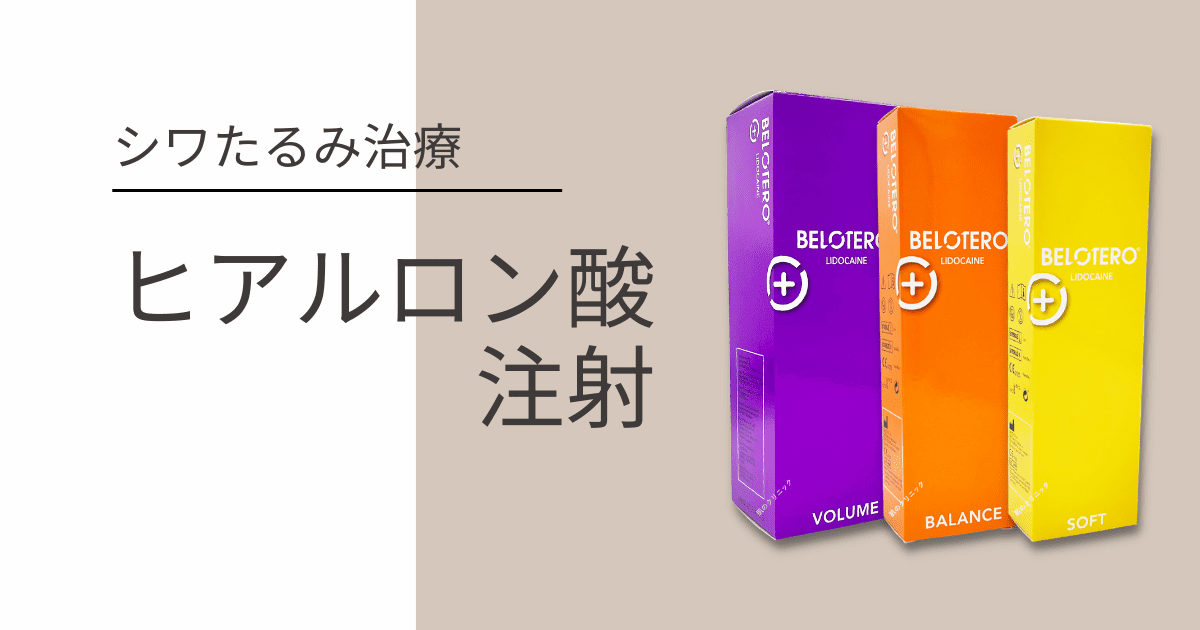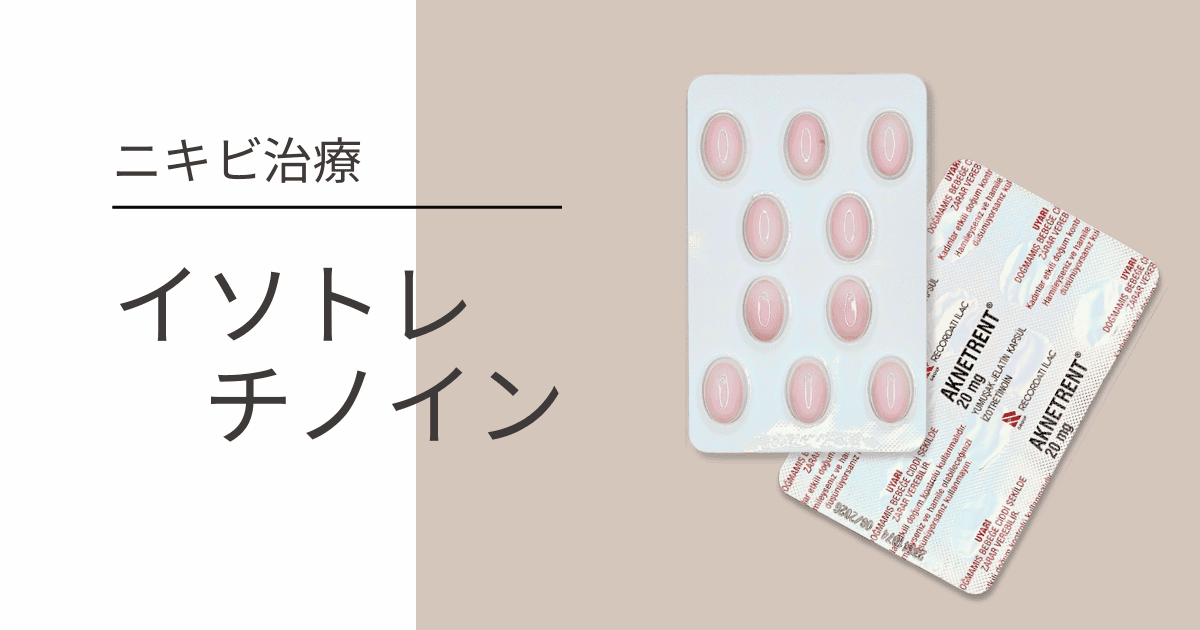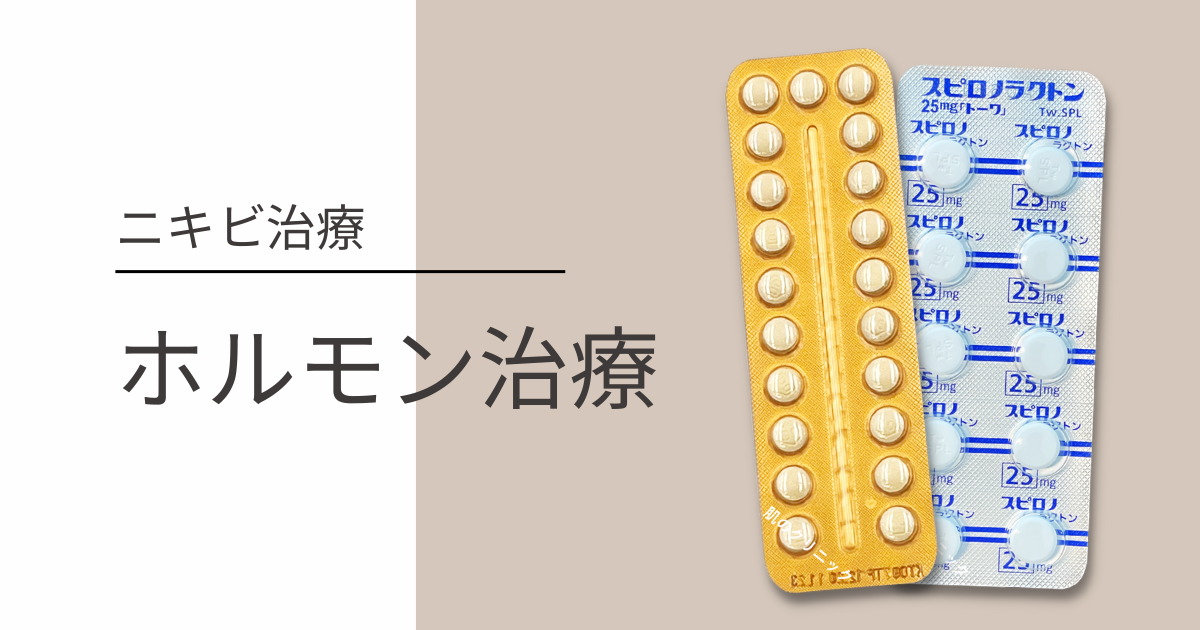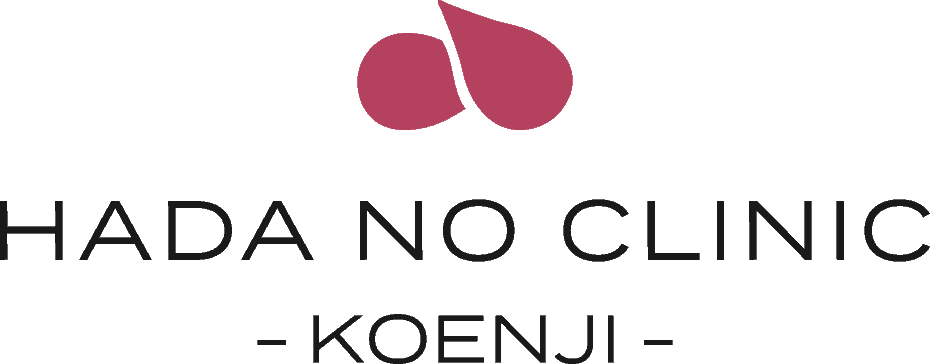Types of Acne Scar Depressions (Atrophic Scars)

What are Atrophic Scars?
Atrophic scars refer to scar tissue that has healed with depressed skin. Acne scar depressions are a type of atrophic scar, commonly referred to as “craters.”
When deep inflammatory acne extends to the dermis and subcutaneous tissue, scar tissue forms during the healing process of inflammation. This scar tissue differs from normal skin structure and may remain as depressions or raised areas.
Atrophic scars are classified by shape as follows:
- Ice Pick Type (V-shaped)
- Rolling Type (M-shaped)
- Box Type (U-shaped)
- Fat Atrophy Type
Multiple types often coexist, requiring diagnosis and treatment tailored to individual conditions.
Types of Acne Scars
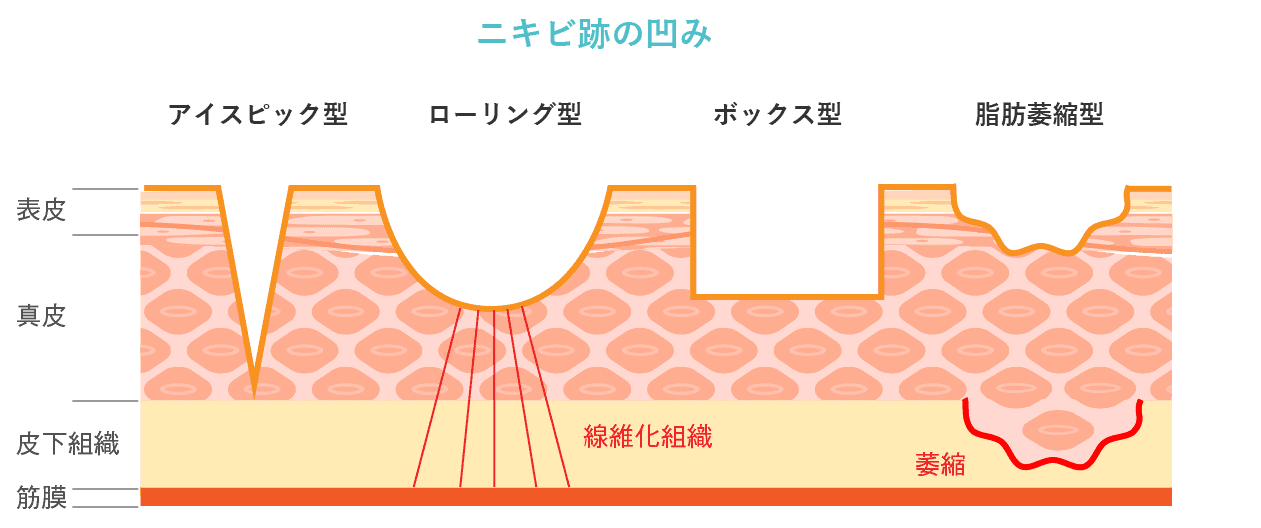
- 1. Box Type
-
Round or oval depressions with flat bottoms and nearly perpendicular edges. They account for about 20-30% of atrophic scars, and chickenpox scars often take this form as well.
- 2. Ice Pick Type
-
Narrow, deep depressions less than 2mm in diameter, accounting for about 60-70% of atrophic scars. They extend deep into the dermis, and histologically, the dermal layer is almost completely absent.
- 3. Rolling Type
-
Gently undulating depressions over 5mm in diameter, accounting for about 15-25%. Fibrotic tissue causes the epidermis to adhere to the fascia, and muscle movement can accentuate the depression. This type is also called “anchored acne scars” or “tethered acne scars.”
- 4. Fat Atrophy Type
-
Depressions caused by reduction of subcutaneous fat, occurring when fat tissue becomes scarred due to inflammation. Age-related fat reduction may also contribute, with scars that were not noticeable in youth becoming more prominent with age.
Treatment of Acne Scar Depressions (Atrophic Scars)
Once scar tissue is formed, it cannot return to normal skin. The goal of treatment is to make scars less noticeable, and combining multiple treatment methods enhances effectiveness.
1. Box Type Treatment
Treatment Methods
Box type depressions are relatively responsive to treatment. The main treatment methods are as follows:
- CO2 Fractional Laser (eCO2)
- Dermapen
These treatments destroy scar tissue and promote wound healing, making depressions less noticeable. After treatment, exosomes or placenta are used in combination to promote collagen and elastin production and enhance healing. Additionally, hydrocolloid patch moist therapy is applied to tissue damaged by treatment to promote wound healing and replace depressed scar tissue with flat scar tissue, making it less noticeable.
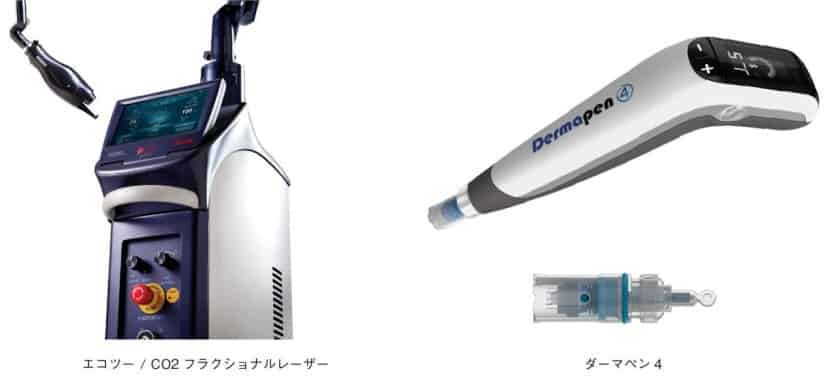
Treatment Duration and Intervals for eCO2 and Dermapen
| Item | eCO2 | Dermapen |
|---|---|---|
| Downtime | 1-2 weeks | 3 days-1 week |
| Treatment Interval | 2 months or more | 4 weeks or more |
| Treatments per Course | 6 sessions | 10 sessions |
Treatment Progress for eCO2 and Dermapen
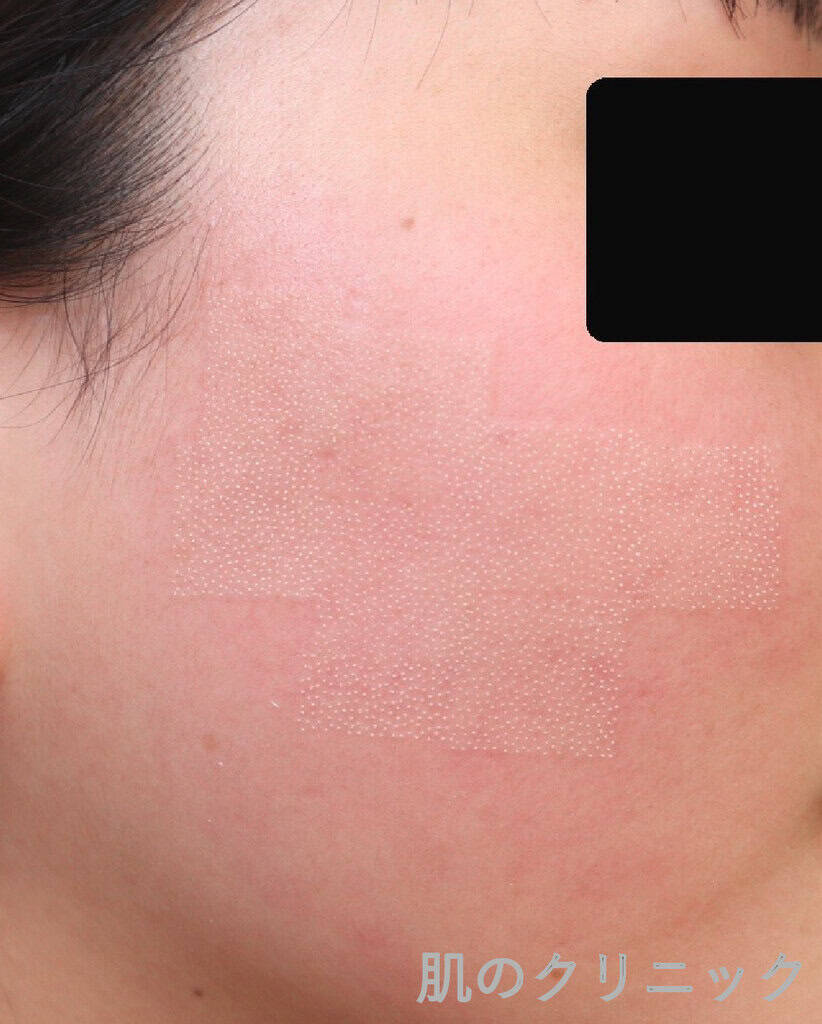
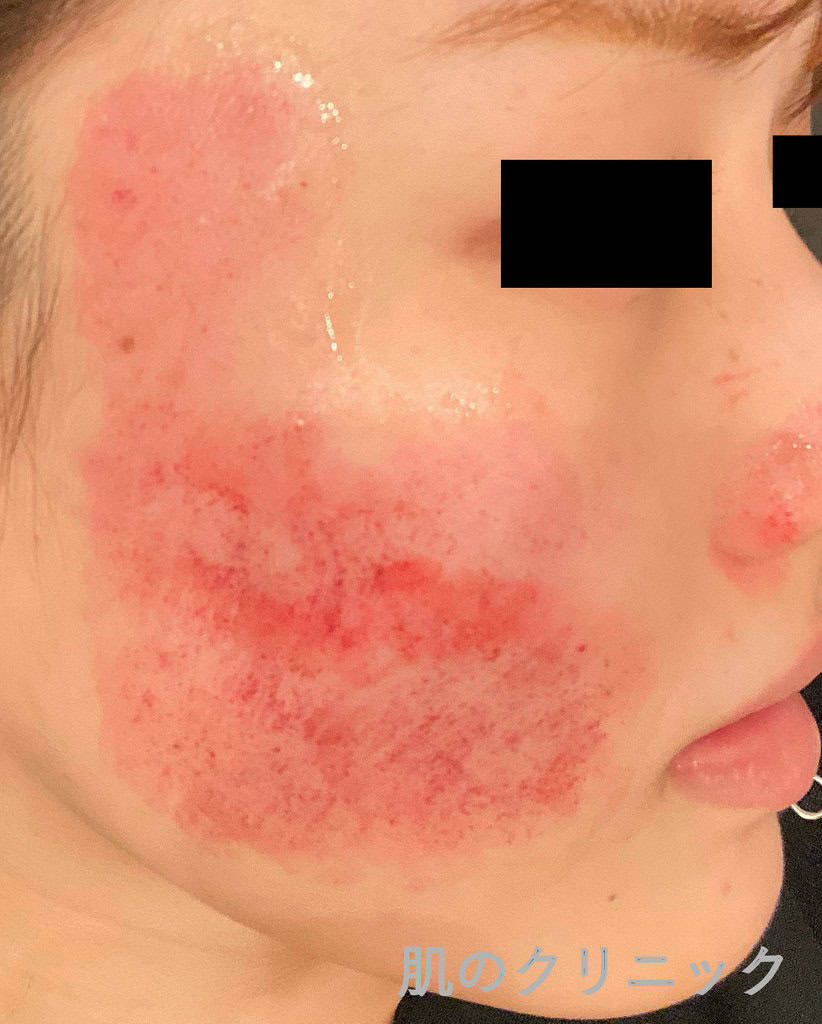
eCO2 (CO2 Fractional Laser) Immediately After Treatment
Immediately after treatment, fine dot-like marks appear on the skin as shown in the photo. Subsequently, redness and swelling occur, sometimes accompanied by bleeding or exudate.
Dermapen (Microneedle) Immediately After Treatment
After Dermapen treatment, the skin becomes red and numerous fine wounds are visible as shown in the photo.
Our eCO2 and Dermapen treatments use high intensity and high energy while stretching the skin to thoroughly destroy acne scar tissue and promote skin regeneration. Therefore, post-treatment downtime is approximately 1-2 weeks.
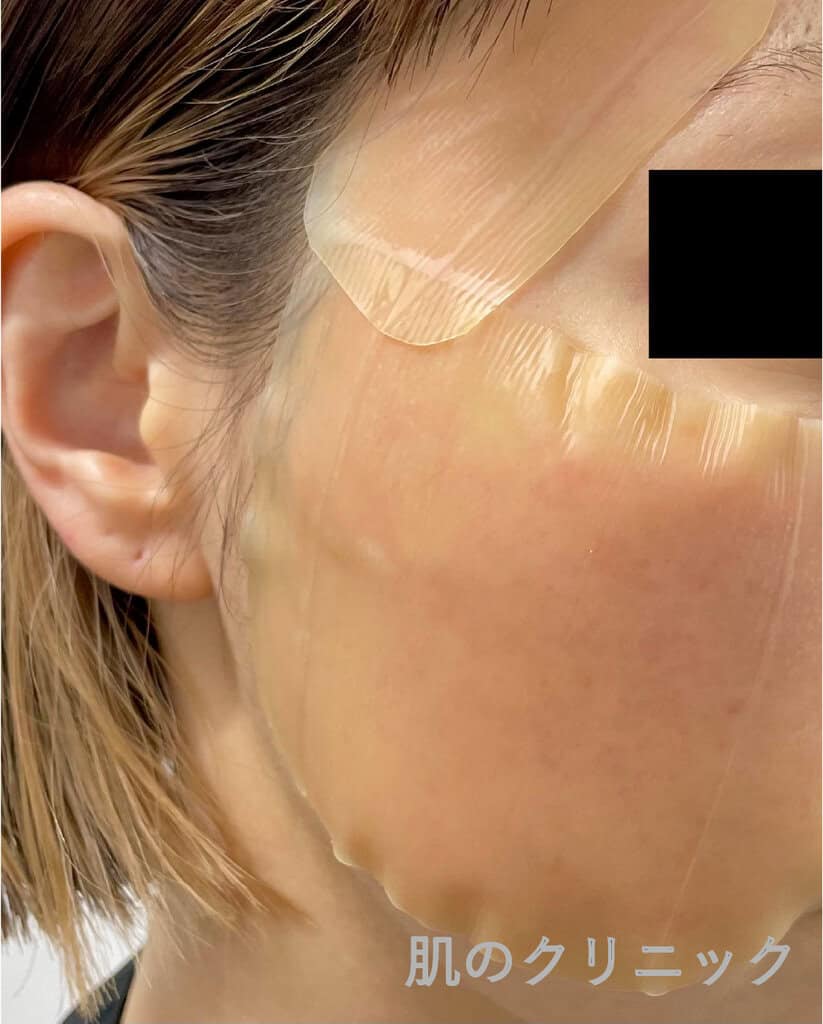
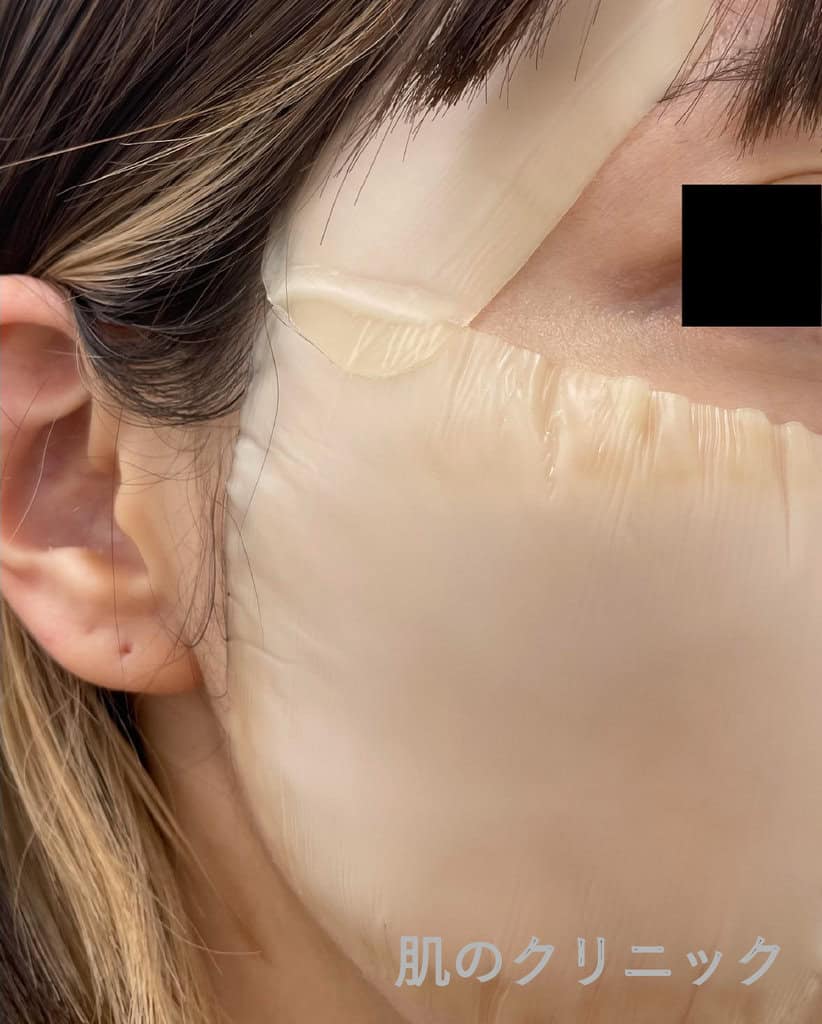
After eCO2 and Dermapen treatments, hydrocolloid tape is applied to promote wound healing. Allowing wounds to dry delays healing. To regenerate the destroyed scar tissue as cleanly as possible, it’s important to maintain a moist environment (keeping wounds from drying out).
About one day after treatment, the tape absorbs exudate from the wound and becomes white and swollen throughout. Usually, the tape swells completely in 1-3 days, and when it can no longer absorb more, it needs to be changed. When changing, gently remove it while moistening with water and apply a new tape.
Applying tape for at least 3 days post-treatment promotes wound healing and leads to a smoother finish.
Case Study: Box Type Acne Scars on Temples
.jpg)
.jpg)
Treatment Details
Before treatment, deep, widespread box-type acne scars were prominent, and age-related temple hollowing emphasized the overall sunken appearance. After treatment, the depressions were significantly reduced, the skin became smoother, and plump temples were achieved, restoring a natural and youthful appearance.
- Treatment Period: 2.5 years
- Treatment Details: eCO2 5 sessions, Dermapen 3 sessions, Exosome/Placenta option 3 sessions, Subcision 2 sessions, Hyaluronic acid injection 1 session, Juvelook 3 sessions, Lenisna 1 session
- Cost (both temples): eCO2 (5×5cm) ¥16,280×5 sessions, Dermapen (5×5cm) ¥10,780×3 sessions, Exosome/Placenta ¥25,190×3 sessions, Subcision ¥19,800×2×2 sessions, Hyaluronic acid ¥79,200, Juvelook ¥44,000×3 sessions, Lenisna ¥44,000 = Total ¥484,110
Main Treatment Approach
CO2 fractional laser (eCO2) and Dermapen were used to destroy scar tissue and promote wound healing. Additionally, exosomes and placenta were used after treatment to promote collagen and elastin production and enhance treatment effects.
Approach to Large Depressions
For deep depressions, subcision was used to release adhesions, and Lenisna was injected to achieve a smooth finish. Juvelook was injected into the dermal layer to improve skin firmness and enhance the overall appearance.
Correction of Age-Related Volume Loss
For depressions caused by fat and bone atrophy, hyaluronic acid was injected above the periosteum to restore volume. This plumped up the entire temple area and restored youthfulness.
Treatment Points
Even seemingly single acne scars are actually caused by multiple interrelated factors. In this case, these factors were comprehensively analyzed, and multiple treatment methods were combined to achieve effective improvement. Since acne scar treatment requires long-term perseverance, early “acne treatment” is most important to prevent acne scars from forming in the first place.
2. Ice Pick Type Treatment
Ice pick type scars have deep depressions and are considered the most difficult acne scars to treat. Our clinic employs the following treatment methods to achieve improvement.
Main Treatment Methods
- CO2 Fractional Laser (eCO2)
To address the depth of depressions, high-energy laser is used to irradiate deep into the dermis. This treatment destroys hard scar tissue and promotes skin regeneration. - Dermapen 4
Needle length is set deeper to directly approach scar tissue. This destroys scars while promoting the production of new collagen and elastin, facilitating skin reconstruction.
Other Treatment Methods Used Overseas
Our clinic does not perform these methods considering invasiveness and downtime, but the following methods are used overseas:
- Punch Excision and Elevation
The scar area is excised with a specialized punch tool, lifted with forceps, and fixed to the skin. This is expected to make the scar area less noticeable. - TCA CROSS Peeling
A strong acid (Trichloroacetic acid: TCA) is applied to the depression to dissolve scar tissue and promote reconstruction of new tissue. This method allows deep approach to the dermal layer.
3. Rolling Type Treatment
Treatment Methods
Treatment for rolling type acne scars basically involves releasing fibrotic tissue adhesions that pull the skin and improving depressions. Our clinic performs the following treatments.
Subcision
A medical needle or cannula is inserted subcutaneously to cut fibrotic tissue and release adhesions. Subsequently, hyaluronic acid or polylactic acid is injected to lift the depression. This treatment allows patients to feel the effect easily after a single session.
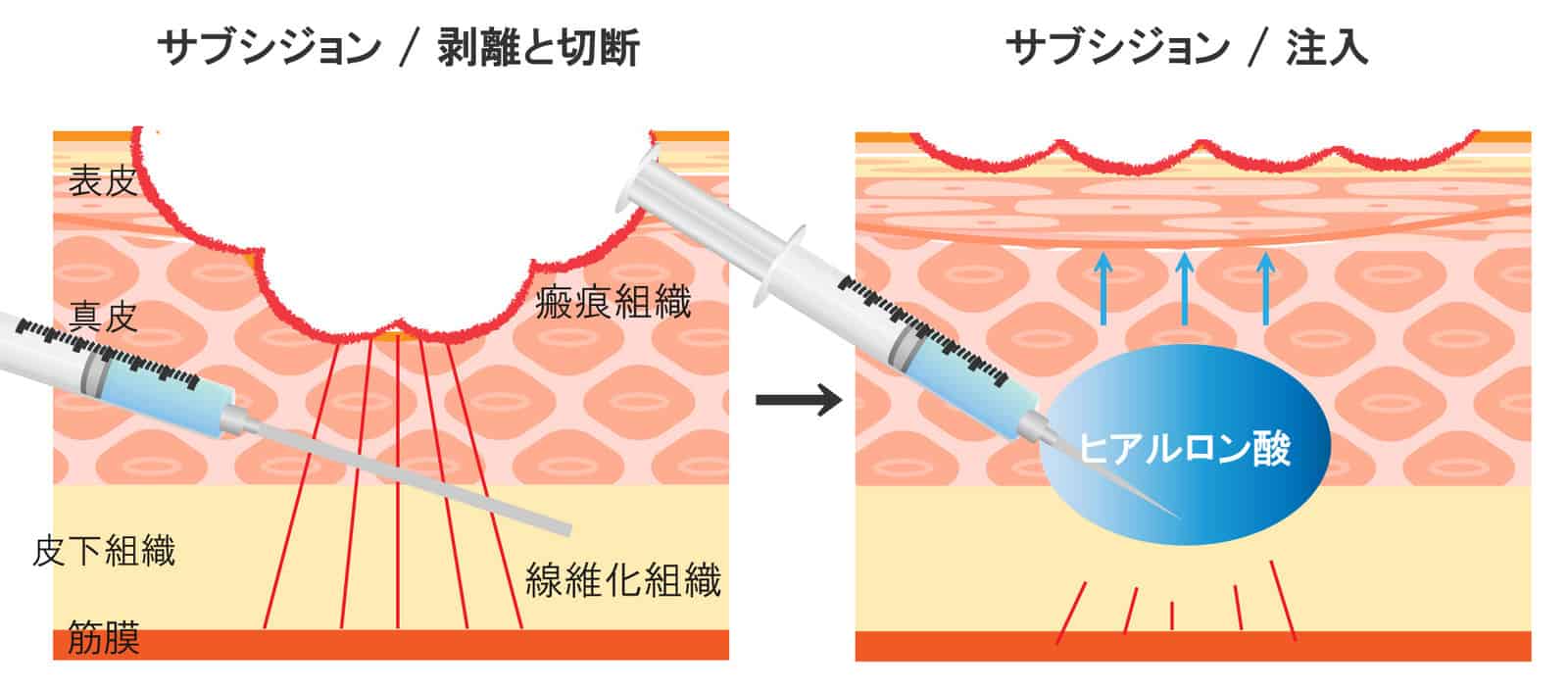
Our clinic uses the following injection materials according to the depth and location of acne scars:
Hyaluronic Acid Products (Belotero from Merz, Germany)
| Type | Duration | Characteristics |
|---|---|---|
| Belotero Soft | 3-6 months | Softest, suitable for shallow layers |
| Belotero Balance | 6-12 months | Medium softness, suitable for intermediate layers |
| Belotero Volume | 12-18 months | Firmer, suitable for deep layers and volume enhancement |
Polylactic Acid Products (Juvelook・Lenisna)
| Type | Duration | Characteristics |
|---|---|---|
| Juvelook | 12-16 months | Suitable for shallow layers, used monthly for 3 sessions as a set |
| Lenisna | 18-24 months | Suitable for middle to deep layers, used monthly for 3 sessions as a set |
Treatment Precautions
- Hyaluronic acid is easily absorbed for 1 month after treatment, so multiple injections are performed at intervals of 1 month or more as needed.
- For polylactic acid, treatment is performed once a month for 3 sessions as a set.
- Repeated treatments make adhesions easier to release, promote collagen production, and can expect long-term effects.
Case Study: Rolling Type Acne Scars
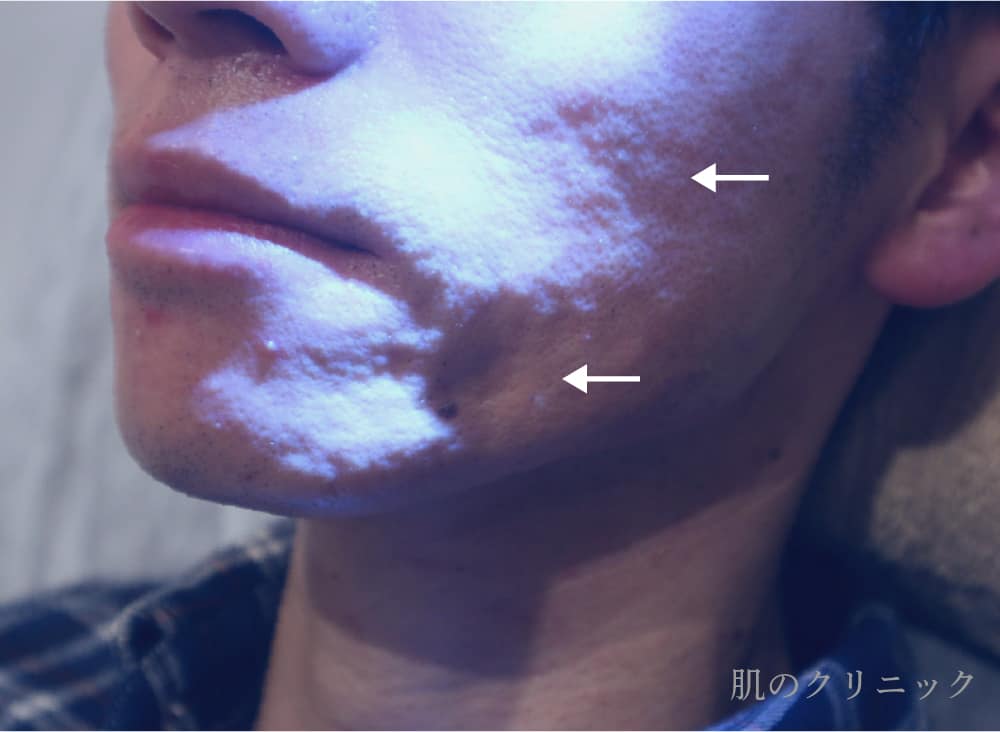
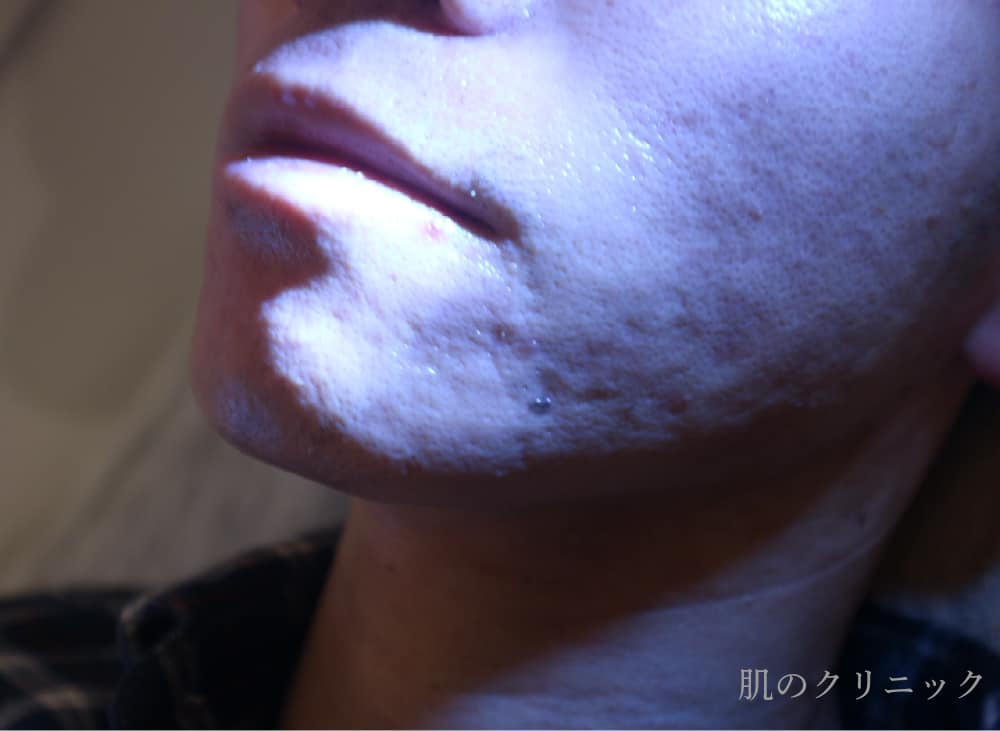
Treatment Details
Before treatment, rolling type acne scars spreading across the chin and cheek were prominent, with irregularities emphasized by adhesions. After treatment, adhesions were released, the skin became smooth, and depressions became less noticeable.
- Treatment Period: 6 months
- Treatment Details: Subcision + hyaluronic acid injection 2 sessions
- Cost (left cheek + left chin): Subcision ¥19,800×2×2 sessions, Hyaluronic acid ¥79,200×2 sessions = Total ¥237,600
Treatment Points
Rolling type acne scars are relatively easier to improve by combining subcision and injection therapy because there is little hard scar tissue under the epidermis. However, rolling type often coexists with box type and ice pick type acne scars, requiring combination therapy.
For example:
- Large depressions are improved with subcision
- Surface hard box-type scars are treated with CO2 fractional laser or Dermapen
Furthermore, since hyaluronic acid is gradually absorbed and age-related fat atrophy and bone atrophy progress, regular treatment is necessary. Repeated treatments advance adhesion release and provide better long-term effects.
4. Fat Atrophy Type Treatment
Treatment Methods
Treatment for fat atrophy type acne scars requires supplementing the reduced fat tissue.
Rolling type is often combined with fibrotic tissue adhesions, so subcision that releases adhesions and restores volume loss is effective. The injection materials chosen are hyaluronic acid (Belotero Volume, Belotero Balance) or large-particle polylactic acid (Lenisna).
When age-related bone atrophy and fat tissue reduction cause skin sagging that makes acne scars more noticeable, subcision is also effective. For dermal sagging, small-particle polylactic acid (Juvelook) or Sunekos may be used in combination.
Case Study: Fat Atrophy Type Acne Scars
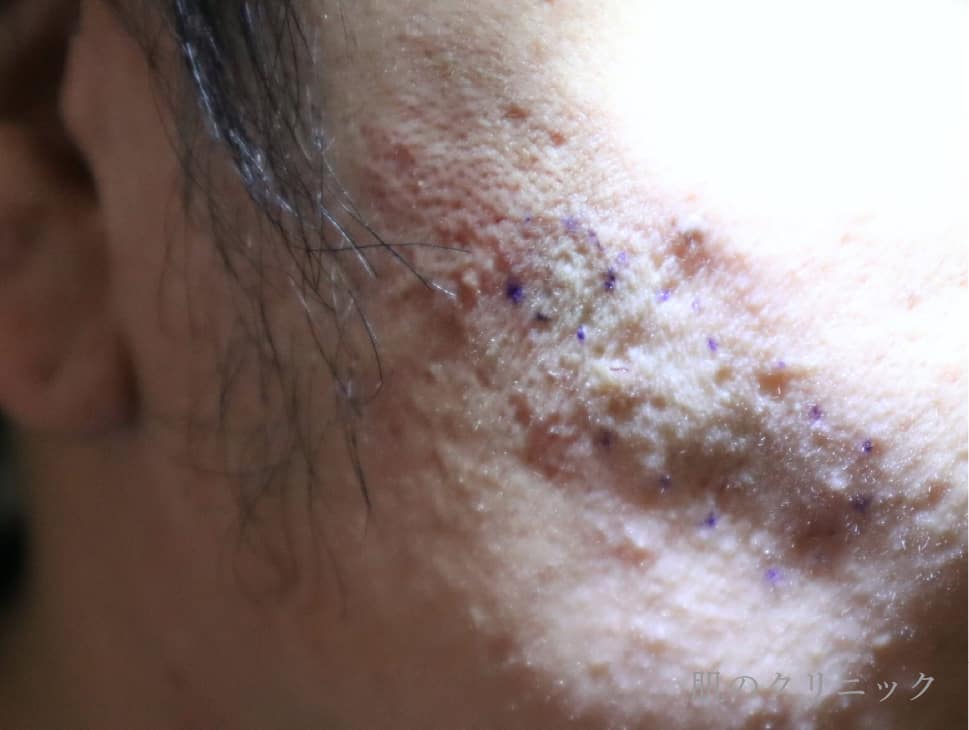
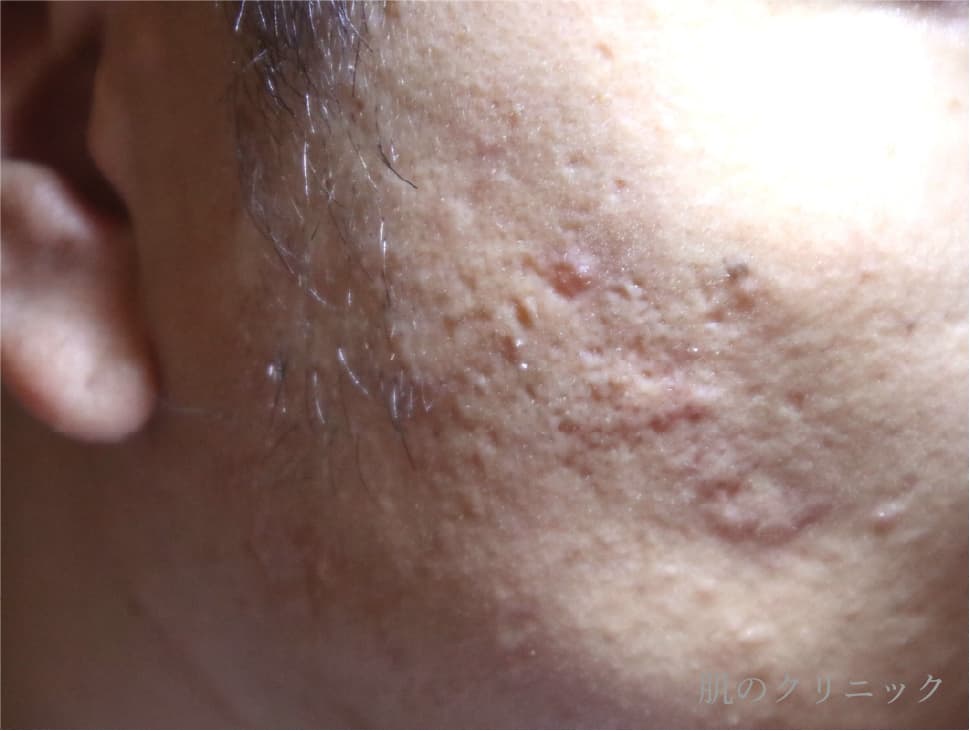
Treatment Details
Before treatment, fat atrophy and rolling scars near the right cheekbone (lateral cheek area) were prominent. The pre-treatment photo shows blue markers drawn for subcision treatment design. After treatment, the lateral cheek area was gently lifted, the entire skin gained firmness, and acne scars became less noticeable. In the post-treatment photo, surface injection material hasn’t been absorbed yet but will gradually blend in.
- Treatment Period: 1 year
- Treatment Details: Subcision + hyaluronic acid injection 2 sessions, eCO2 (CO2 fractional laser) 4 sessions, Juvelook 3 sessions
- Cost (half face): Subcision ¥19,800×2×2 sessions, Hyaluronic acid ¥79,200×2 sessions, eCO2 (half face) ¥27,280×4 sessions, Juvelook ¥44,000×3 sessions = Total ¥478,720
This is a case of subcision performed for right cheekbone fat atrophy and rolling type depression (the pre-treatment photo shows blue markers for treatment design and mask marks).
Fat Atrophy Correction
For depressions caused by fat reduction, deep subcutaneous tissue was released and volume-type hyaluronic acid was injected. This lifted the lateral cheek area, achieving a plump and natural finish.
Surface Scar Treatment
For surface fine box-type and ice pick-type acne scars, eCO2 and Juvelook were alternately performed at monthly intervals.
- eCO2: Destroys dermal scar tissue and promotes regeneration
- Juvelook: Restores dermal firmness and stimulates collagen production
These treatments reduced overall shadows and improved the skin to a smoother and brighter appearance.
Treatment Points
Fat atrophy type acne scars are difficult to achieve sufficient results with single treatments alone, so combining subcision and hyaluronic acid injection with eCO2 and Juvelook aims for natural and long-term improvement.
Also, similar to rolling type treatment, hyaluronic acid is gradually absorbed and age-related fat atrophy and bone atrophy progress, requiring regular treatment.
Side Effects
Side Effects of eCO2 and Dermapen
- 1. Pain
-
Cream anesthesia is applied, but pain accompanies the procedure. Severe pain subsides within one day.
- 2. Redness
-
Usually improves in 3 days to 2 weeks, but rarely may continue for several months. Please schedule your next treatment after the post-treatment redness disappears.
- 3. Acne
-
Acne may temporarily increase.
- 4. Melasma
-
If hidden melasma exists, it may appear due to eCO2 or Dermapen stimulation. In such cases, separate melasma treatment such as tranexamic acid oral medication is required.
- 5. Pigmentation
-
Depending on constitution and skin type, scars after laser or Dermapen may become pigmented. Also, failure to follow tape treatment or UV protection makes pigmentation and darkening more likely. Usually improves naturally within six months, but rarely may remain long-term.
- 6. Burns and Scar Formation
-
Very rarely, there is a risk of burns after eCO2 or scar formation after Dermapen wounds due to skin type and constitution.
- 7. Allergies and Anaphylactic Shock
-
Very rarely, severe allergic reactions (anaphylaxis: systemic rash, swelling of skin/lips/tongue, difficulty breathing, palpitations, blood pressure drop, consciousness disorders, convulsions, etc.) may occur due to constitution from cream anesthesia (containing lidocaine, trace amounts of propylene glycol, ethanol, methylparaben, etc.), tape anesthesia, or local anesthesia. Theoretically, this can occur with any ingredient, so it may also occur with growth factors or placenta products. If symptoms occur after returning home, call an ambulance immediately.
Side Effects of Subcision
Common Side Effects
- 1. Needle Marks, Redness, and Bruising
-
Needle marks improve in 1-3 days, redness in 1 day to 2 weeks, and bruising in 2-3 weeks.
- 2. Pain and Itching
-
Pain and itching may be felt at injection sites for several days after treatment.
- 3. Numbness and Discomfort
-
Numbness and discomfort may be felt due to contained anesthesia, but improve quickly.
- 4. Tyndall Effect
-
When hyaluronic acid is injected into shallow layers such as under the eyes, it may appear blue and look like dark circles. This does not occur with polylactic acid.
- 5. Swelling and Irregularities
-
Swelling and irregularities occur after injection. Also, hyaluronic acid may be palpable subcutaneously, but leave it as it is lifting depressions and wrinkles. Usually blends in gradually over about 2 weeks, but if still bothersome after 3 weeks, consult with the doctor.
Very Rare but Serious Side Effects
- 1. Allergies and Anaphylactic Shock
-
Some people may have allergies to contained anesthetic components, pre-treatment cream anesthesia or tape anesthesia components, hyaluronic acid, polylactic acid, etc. If severe allergic symptoms (systemic rash, swelling of skin/lips/tongue, difficulty breathing, palpitations, blood pressure drop, consciousness disorders, convulsions) occur after returning home, call an ambulance immediately.
- 2. Foreign Body Granuloma, Induration, and Nodules
-
Induration and nodules may occur at injection sites due to excessive fibroblast reaction, immune reaction, or allergies. Very rarely, “foreign body granuloma” lumps may appear and remain as scars.
- 3. Infection
-
People with weak immunity or immunodeficiency may develop infection from insertion sites.
- 4. Vascular Occlusion
-
Serious complications such as arterial embolism, skin necrosis, skin discoloration, blindness, visual impairment, and stroke have been reported due to accidental intravascular injection.
- 5. Nerve Damage
-
Sensory and motor nerve damage may occur. Usually improves in about 3 months, but very rarely may persist.
Post-Treatment Precautions
- Tape will be applied to your face and strong redness will appear. We recommend bringing masks, wide-brimmed hats, sunglasses, etc. to prevent UV exposure and hide your face.
- eCO2: Hydrocolloid tape for wound healing is applied for moist therapy.
Dermapen: Airwall UV, hydrocolloid, or Vaseline is selected based on wound severity. - Tape or Vaseline application should be continued for at least 3 days. For hydrocolloid tape, it will swell white with exudate from wounds, so change the tape when the entire surface becomes white. For Airwall UV, change when the entire surface becomes easily detached due to exudate or sweat.
- If tape is difficult to remove when changing, moisten thoroughly with lukewarm water for easy removal.
- Frequent changing can peel off newly formed skin, causing pigmentation or poor wound healing. Keep tape on as much as possible.
- Avoid makeup, exercise, alcohol, and bathing for at least 3 days.
- Showering is possible, but avoid washing your face if possible. If washing is necessary, use only lukewarm water, and if tape gets wet, wipe off moisture with a towel.
- When changing tape, after removing it, gently wash the affected area with lukewarm water and dry with a clean towel before applying new tape. Do not rub or peel off scabs.
Treatment Costs
eCO2 and Dermapen Pricing
| Treatment Menu | Price (Tax Included) |
|---|---|
| Consultation Fee | Initial consultation ¥3,850 Follow-up consultation ¥1,650 |
| eCO2 (CO2 Fractional Laser) | Full face ¥38,280 Half face ¥27,280 5×5cm ¥16,280 |
| Dermapen 4 | Full face ¥27,280 Half face ¥18,480 5×5cm ¥10,780 |
| Exosome Application (Option) | 1V ¥24,200 |
| Exosome Manual Injection (by Doctor, Option) | 1V ¥44,000 |
| Juvelook Application (Option)※Dermapen only | 1/4V ¥19,800 |
| Human Placenta (Option) | 1A (2mL) ¥990 |
| Botulinum Toxin Coretox (Option) | 32 units ¥8,800 |
| Growth Factors (EGF/FGF) | Free |
| Cream Anesthesia | Full face ¥3,300 5×5cm ¥1,650 |
- Half-face pricing applies when treating “cheek + jawline,” “cheek + chin,” “cheek + temple,” “cheek + nose,” etc., covering half or less of the facial area. For “cheek + forehead,” full-face pricing applies.
- When using placenta or exosomes, a blood donation restriction consent form is required.
- Exosomes are used completely for one patient per vial. To maintain effectiveness (activity), they are dissolved immediately before use. Two or more vials may be used as needed.
- Exosomes can also be dissolved in placenta for use. Laennec or Melsmon can be selected.
- Botox (Coretox) can be expected to improve wrinkles and fine lines, tighten pores, and suppress sebum secretion. After Coretox treatment, women should use contraception until two menstrual cycles pass, and men should use contraception for 3 months.
Subcision Pricing
| Treatment Menu | Price (Tax Included) |
|---|---|
| Consultation Fee | Initial consultation ¥3,850 Follow-up consultation ¥1,650 |
| Subcision (Release) | 1 area (5-30mm) ¥19,800 |
| Belotero (Hyaluronic Acid) | 1 syringe (1mL) ¥79,200 2nd syringe onward ¥69,300/syringe |
| Juvelook (Polylactic Acid) | 3 ml (1/4 vial) ¥44,000 6 ml (1/2 vial) ¥79,200 9 ml (3/4 vial) ¥112,200 12 ml (1 vial) ¥140,800 Additional 3ml ¥35,200 each |
| Lenisna (Polylactic Acid) | 2.5 ml (1/5 vial) ¥44,000 5 ml (2/5 vial) ¥79,200 7.5 ml (3/5 vial) ¥99,000 10 ml (4/5 vial) ¥132,000 12.5 ml (1 vial) ¥165,000 Additional 2.5ml ¥33,000 each |
| Hylenex (Hyaluronic Acid Dissolving Injection) | 1 vial (150 units) ¥54,780 |
| Cream Anesthesia (Option) | Local anesthesia ¥330 Tape anesthesia ¥330 per sheet |
- Consultation is required before each treatment. Microneedle and cannula costs are included in the prices.
- The pricing for second and subsequent hyaluronic acid syringes is a discount rate when performed on the same day.
- Hyaluronic acid is used completely per syringe for infection prevention. Any remaining hyaluronic acid is discarded.
- Hyaluronic acid dissolving injections are free for emergencies or corrections within 1 month post-treatment; after that, charges apply.
- Juvelook and Lenisna come in vials. Since preparation concentrations vary by medical institution, our clinic creates them at standard concentrations according to protocol and indicates vial amounts.
- Hyaluronic acid, Juvelook, and Lenisna can be performed on the same day depending on the area and condition.
Frequently Asked Questions About Acne Scar Depression Treatment
- Can I receive treatment on the same day?
-
In principle, same-day treatment is not available. Acne scar depression treatment, including anesthesia, can take over an hour, so we ask you to schedule a treatment appointment for a later date.
- Are there cases where treatment cannot be received?
-
Those who cannot receive subcision treatment
- Those with keloid constitution (except with doctor’s permission)
- Those with dermatitis or skin infections
- Those with blood disorders or bleeding tendencies
- Those who have had allergic reactions to anesthesia or hyaluronic acid products
Those who cannot receive eCO2 or Dermapen treatment
- Pregnant or breastfeeding women
- Those who have had allergic reactions to anesthetic drugs
- Those who regularly get sunburned
- Those with abnormalities in treatment areas such as dermatitis or skin infections
- Those with keloid constitution (except with doctor’s permission)
- Those with gold threads inserted
- Those with tattoos, permanent makeup, or permanent foundation (BB Glow, CC Glow, etc.) in treatment areas
- Those currently taking isotretinoin or within 3 months of stopping (except with doctor’s permission)
Additionally, depending on medications you are using or treatments you have received, intervals may be required. Please consult during examination.
Please also refer to “Treatment Intervals.”
- Please explain the difference between Dermapen and eCO2
-
Dermapen 4 is a pen-shaped medical device with numerous fine needles. It vibrates up and down to destroy acne scar tissue.
eCO2 is a fractional laser using carbon dioxide gas. The laser is applied in dot patterns, destroying scar tissue with thermal energy. It uses the skin regeneration process to heal depressions.
Both treatments destroy dermal layer scars once and use the skin regeneration process (reconstruction) to improve depressions.
Treatment Intervals and Sessions
- eCO2: 2-month intervals, 1 course = 6 sessions
- Dermapen: 4-week intervals, 1 course = 10 sessions
Treatment Effects and Downtime
Single treatment effects are slightly higher with eCO2, but improvement rates after completing one course are about 20-30% for both, so final effects don’t differ significantly regardless of choice.
- eCO2: Downtime approximately 1-2 weeks
- Dermapen: Downtime approximately 3-7 days
Dermapen 4 has relatively short downtime, so we recommend Dermapen for those who cannot take much downtime.
eCO2 adjusts depth and intensity by adjusting chips used, energy, watts, and density. Dermapen adjusts depth and intensity by adjusting needle length, application strength, and density.
The first treatment is performed at depth and intensity suited to skin type, and from the second treatment onward, parameters are adjusted based on redness and effects from the first treatment.
- What is the improvement rate for Dermapen and eCO2?
-
Depressions and craters are the most difficult area to treat and cannot be completely restored. Even after completing one course (about one year) of eCO2 or Dermapen treatment, improvement rates are only about 20-30%, so results are not dramatic. It’s better to think of it as making depressions and craters less noticeable.
It’s important to understand that having depressions and craters causes no health problems and does not diminish your human value or attractiveness. Since this is an expensive treatment with risks of side effects, you must weigh the benefits and disadvantages of treatment.
This treatment requires patience, so please also consider the option of “not treating.”
- How long does it take until treatment is complete?
-
It depends on the severity of depressions and craters. Usually consider about 1-2 years as a guideline.
- Can treatment be done with no downtime?
-
For depressed acne scars, treatments with absolutely no downtime cannot provide improvement.
Dermapen has 3-7 days of downtime, and eCO2 has about 1-2 weeks. While downtime can be somewhat controlled by treatment method and intensity (such as laser output settings or Dermapen needle length), please expect that there will always be some downtime, more or less.
For subcision, we now use cannulas for release, so bruising risk has decreased significantly compared to before. Therefore, if no bruising occurs, downtime is about one day.
- What should I be careful about after treatment?
-
It’s necessary to maintain a moist environment for the skin post-treatment. Our clinic uses dressing materials (wound coverings) like hydrocolloid and Airwall UV that heal wounds quickly to maintain a moist environment as much as possible.
For Dermapen, Vaseline treatment is possible, but we recommend tape treatment when possible.
Avoiding UV exposure post-treatment is important. The period until makeup is possible varies by treatment performed, but generally requires about 3-7 days.
References and Sites
- Fabbrocini G, (2010) “Acne scars: pathogenesis, classification and treatment.” Dermatol Res Pract. 2010;2010:893080. doi: 10.1155/2010/893080. Epub 2010 Oct 14. PMID: 20981308
- Jacob CI, (2001) “Acne scarring: a classification system and review of treatment options.” J Am Acad Dermatol. 2001 Jul;45(1):109-17. PMID: 11423843
- SUNEVA medical “Bellafill Acne Scar” https://bellafill.com/bellafill-acne-scar/ Last accessed: 2023/01/10

